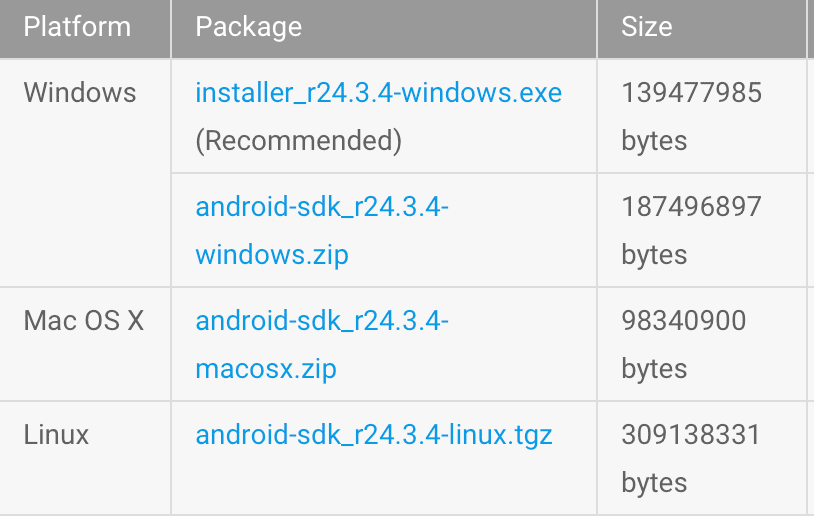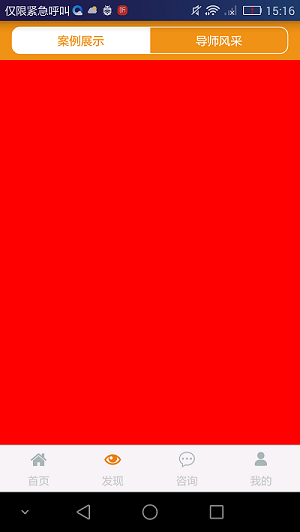關於HttpUrlConnection用法
1.HttpRequestBase(HttpGet..)
HttpClient 支持多種訪問網絡的方式,包括GET, HEAD, POST, PUT, DELETE, TRACE and OPTIONS. 其對應子類為HttpGet, HttpHead, HttpPost, HttpPut, HttpDelete, HttpTrace, and HttpOptions.但在使用時多為HttpGet, HttpPost兩種方式。
[java]
/**
* 一個簡單的get請求
*/
private static void get() {
// 1.得到HttpClient對象
HttpClient httpClient = new DefaultHttpClient();
// 2.實例化一個HttpGet對象
HttpGet httpGet = new HttpGet("http://www.baidu.com");
try {
// 3.httpClient執行httpGet請求
HttpResponse response = httpClient.execute(httpGet);
HttpEntity entity = response.getEntity();
if (entity != null) { // 如果有數據表示請求成功
System.out.println(EntityUtils.toString(entity, "utf-8"));
} else {
System.out.println("連接失敗!");
}
} catch (Exception e) {
e.printStackTrace();
} finally {
// 4.釋放資源(Shuts down this connection manager and releases allocated
// resources)
httpClient.getConnectionManager().shutdown();
}
}
2.HttpResponse
通過得到HttpResponse對象,可以得到相關訪問網絡的信息,比如getEntity() getStatusLine()等等
[java]
System.out.println(response.getProtocolVersion());
System.out.println(response.getStatusLine().getStatusCode());
System.out.println(response.getStatusLine().getReasonPhrase());
System.out.println(response.getStatusLine().toString());
輸出結果為
[java]
/*
HTTP/1.1
200
OK
HTTP/1.1 200 OK
*/
[java]
//得到請求的響應數據
//方式一.
HttpEntity entity = response.getEntity();
if (entity != null) { // 如果有數據表示請求成功
System.out.println(EntityUtils.toString(entity, "utf-8"));
} else {
System.out.println("連接失敗!");
}
//方式二.
if(response.getStatusLine().getStatusCode() == 200){
HttpEntity myEntity = response.getEntity();
BufferedInputStream in = new BufferedInputStream(myEntity.getContent());
byte[] bytes = read(in);//通過自定義的read方法,取得該輸入流對應的數據
}
3.ResponseHandler
[java]
/**
* 通過ResponseHandler處理請求
*/
private static void test() {
HttpClient httpClient = new DefaultHttpClient();
HttpGet httpGet = new HttpGet("http://www.baidu.com");
//自定義ResponseHandler對象
ResponseHandler<String> myHandler = new ResponseHandler<String>() {
@Override
public String handleResponse(HttpResponse response)
throws ClientProtocolException, IOException {
HttpEntity entity = response.getEntity();
String result = "連接失敗!";
if (entity != null) { // 如果有數據表示請求成功
result = EntityUtils.toString(entity, "utf-8");
}
return result;
}
};
try {
String result = httpClient.execute(httpGet, myHandler);//接收該myHandler對象
System.out.println(result);
} catch (Exception e) {
e.printStackTrace();
} finally {
// 釋放資源(Shuts down this connection manager and releases allocated resources)
httpClient.getConnectionManager().shutdown();
}
}
4.Post完成Form表單的提交
[java]
/**
* 完成form表單的提交
*/
private static void post() {
HttpClient httpClient = new DefaultHttpClient();
HttpPost httpPost = new HttpPost("http://127.0.0.1:8080/My/upload");
try {
// 為httpPost設置HttpEntity對象
List<NameValuePair> parameters = new ArrayList<NameValuePair>();
parameters.add(new BasicNameValuePair("username", "zhangsan"));
parameters.add(new BasicNameValuePair("password", "123321"));
HttpEntity entity = new UrlEncodedFormEntity(parameters);
httpPost.setEntity(entity);
// httpClient執行httpPost表單提交
HttpResponse response = httpClient.execute(httpPost);
// 得到服務器響應實體對象
HttpEntity responseEntity = response.getEntity();
if (responseEntity != null) {
System.out.println(EntityUtils
.toString(responseEntity, "utf-8"));
System.out.println("表單上傳成功!");
} else {
System.out.println("服務器無響應!");
}
} catch (Exception e) {
e.printStackTrace();
} finally {
// 釋放資源
httpClient.getConnectionManager().shutdown();
}
}
5.Post完成文件的長傳
[java]
/**
* 通過post完成文件的上傳
*/
private static void postFile() {
HttpClient httpClient = new DefaultHttpClient();
HttpPost httpPost = new HttpPost("http://127.0.0.1:8080/My/upload");
try {
// 需要上傳的文件
String root = "D:/api/";
String fileName = "JDK6.0 中文文檔.CHM";
File uploadFile = new File(root+fileName);
//定義FileEntity對象
HttpEntity entity = new FileEntity(uploadFile);
//為httpPost設置頭信息
httpPost.setHeader("filename", URLEncoder.encode(fileName,"utf-8"));//服務器可以讀取到該文件名
httpPost.setHeader("Content-Length", String.valueOf(entity.getContentLength()));//設置傳輸長度
httpPost.setEntity(entity); //設置實體對象
// httpClient執行httpPost提交
HttpResponse response = httpClient.execute(httpPost);
// 得到服務器響應實體對象
HttpEntity responseEntity = response.getEntity();
if (responseEntity != null) {
System.out.println(EntityUtils.toString(responseEntity, "utf-8"));
System.out.println("文件 "+fileName+"上傳成功!");
} else {
System.out.println("服務器無響應!");
}
} catch (Exception e) {
e.printStackTrace();
} finally {
// 釋放資源
httpClient.getConnectionManager().shutdown();
}
}
 Android開發之Android studio的安裝與使用
Android開發之Android studio的安裝與使用
 Android 處理OnItemClickListener時關於焦點顏色的設置問題
Android 處理OnItemClickListener時關於焦點顏色的設置問題
 Android通過反射和注解簡化代碼編寫(一)
Android通過反射和注解簡化代碼編寫(一)
 android仿ios實現分段選擇控件UISegmentedControl
android仿ios實現分段選擇控件UISegmentedControl